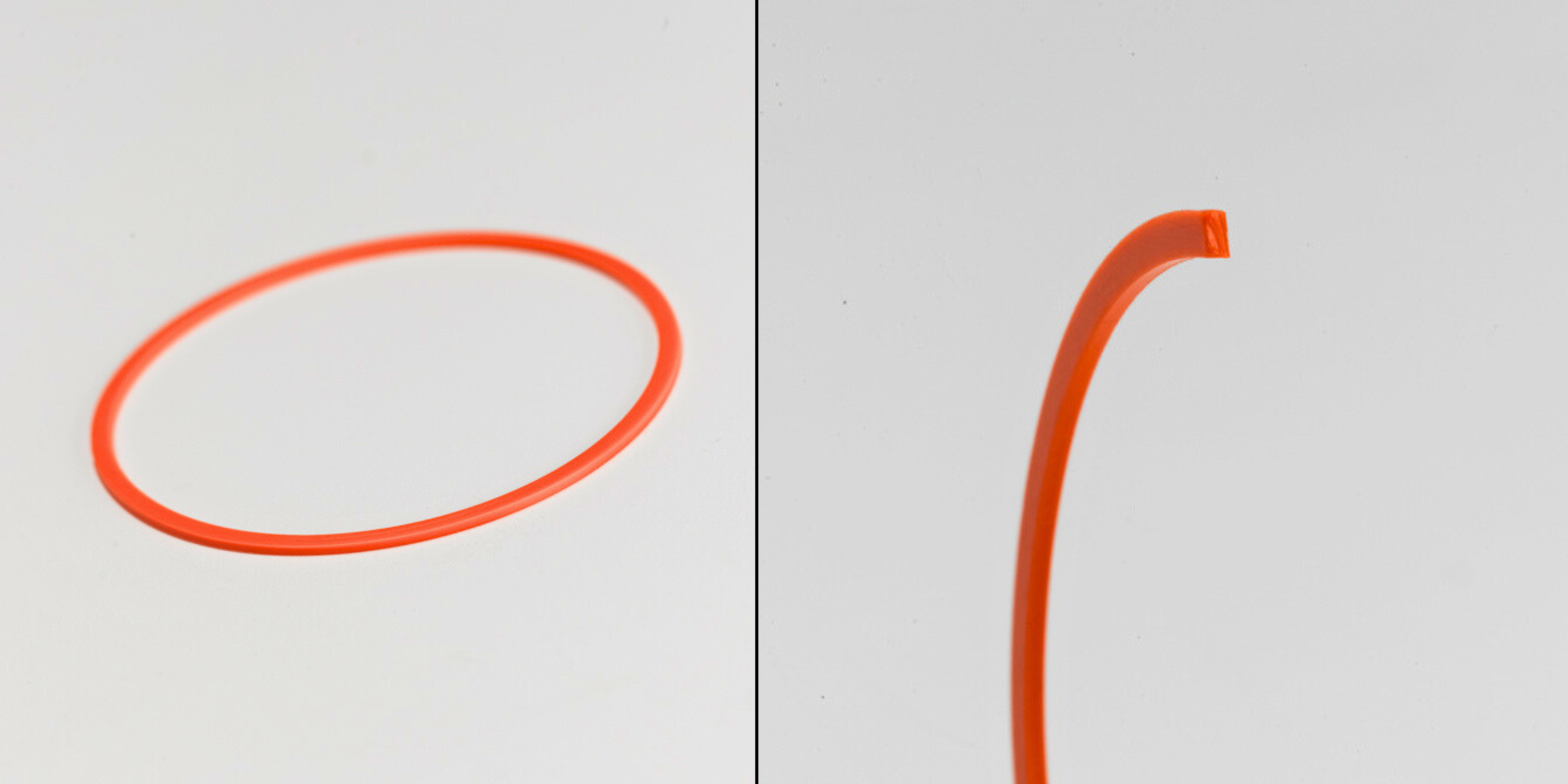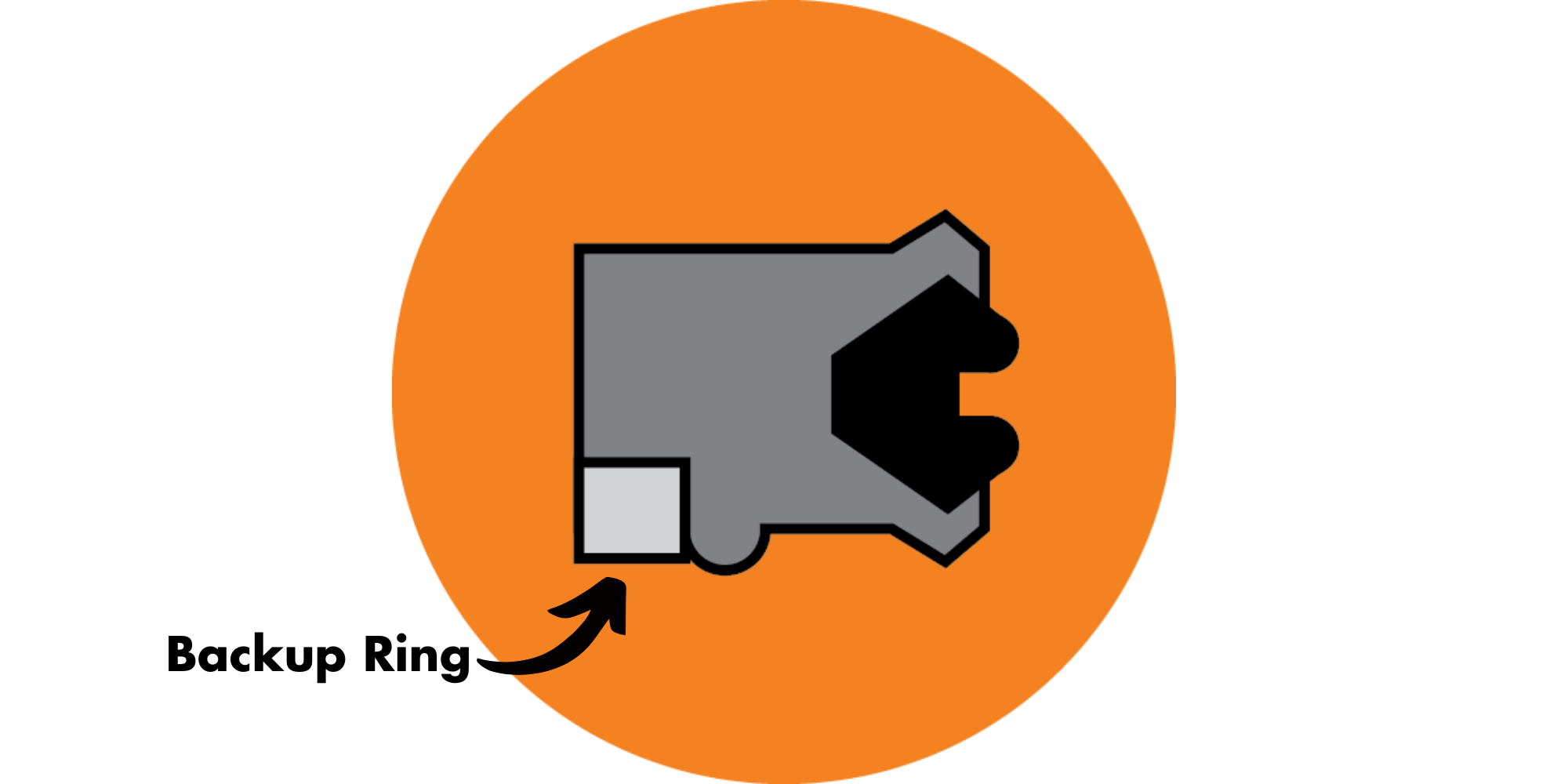In a demanding industrial landscape, the performance and reliability of your hydraulic power is paramount. Whether you're managing heavy equipment, aerospace systems, or high-pressure manufacturing machinery, failure of your hydraulic seals can result in machine downtime, lost production, and ultimately lost revenue. When pressure and temperature can affect the reliability of your components, there is a way to safeguard. Backup rings could be the solution you need to ensure that extreme pressure doesn't wreak havoc on your machines.
From protecting from extrusion to extending the life of your O-rings, rigid backup rings can add endless benefits to protecting your entire operation. Learn more about backup rings and where they might fit in your system in this guide.
What is a Backup Ring?
Backup rings are rigid ring-shaped components made from materials like Hytrel™, PTFE, nylon, or other high-modulus plastics. They’re designed to support soft sealing elements, such as O-rings or polyurethane seals, by preventing extrusion into the clearance gaps of mating metal surfaces under high-pressure conditions.
As pressure is increased in a system, the pressure tries to force softer sealing components through the tiny gap between the gland and the bore. As those components are extruded into the gap, the sealing effectiveness is compromised, and it could result in leaks, loss of power, and complete failure of hydraulic cylinders.
Simply, backup rings keep your seals from being forced out of place or destroyed when the pressure spikes.
Where Are Backup Rings Used?
Backup rings are typically installed in several places in a hydraulic cylinder. You can find backup rings behind O-rings in static or dynamic sealing grooves, on the low-pressure side of rod or piston seals, or in gland or piston assemblies where clearance gaps pose extrusion risks
Depending on the pressure direction, backup rings can be placed on one or both sides of the seal to offer full-spectrum protection. In hydraulic cylinders, this is especially vital where system pressures can easily exceed 3,000 PSI, and even minor seal extrusion can result in catastrophic downtime.
You'll find backup rings come standard with many of our high-performance seals such as the RP1 Rod Seal, RBR Buffer Seal, and the LTP Piston Seal.

See Our Backup Ring Data Sheet
Why Are Backup Rings So Important?
If you’ve ever experienced premature O-ring or rod seal failure in high-pressure systems, there's a strong chance that seal extrusion was the culprit. Backup rings prevent that failure by:
- Reducing the risk of blowouts by reinforcing the sealing element
- Extending the service life of both seals and system components
- Minimizing unplanned downtime due to hydraulic leaks or seal degradation
- Enabling the use of softer, more chemically compatible seal materials that would otherwise be too extrusion-prone
Think of backup rings as an inexpensive insurance policy against high-cost failures. When precision, uptime, and safety matter—backup rings aren’t optional, they’re essential.
Applications That Demand Backup Rings
Backup rings are indispensable in industries where high-pressure hydraulic systems are standard, such as:
- Mobile and construction equipment
- Aerospace actuation systems
- Oil and gas drilling tools
- Injection molding machines
- Presses and heavy industrial machinery
If your system operates under high loads, fluctuating pressures, or extreme temperatures, backup rings from PSP Seals can dramatically improve seal performance and system longevity.
Why Choose PSP Seals?
At PSP Seals, we’re not just suppliers—we’re sealing solution partners. Our backup rings are precision-engineered and compatible with a wide range of hydraulic seal profiles. Whether you need custom sizes, high-performance materials, or guidance on integration, our team is here to help.
Ready to upgrade your sealing strategy? Contact PSP Seals today to talk to an engineer about incorporating backup rings into your high-pressure systems.




